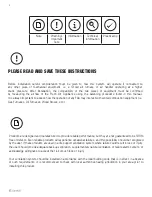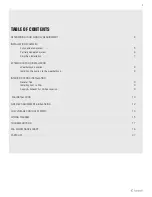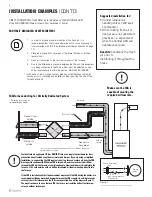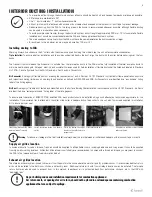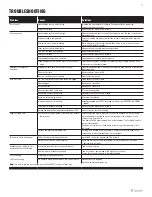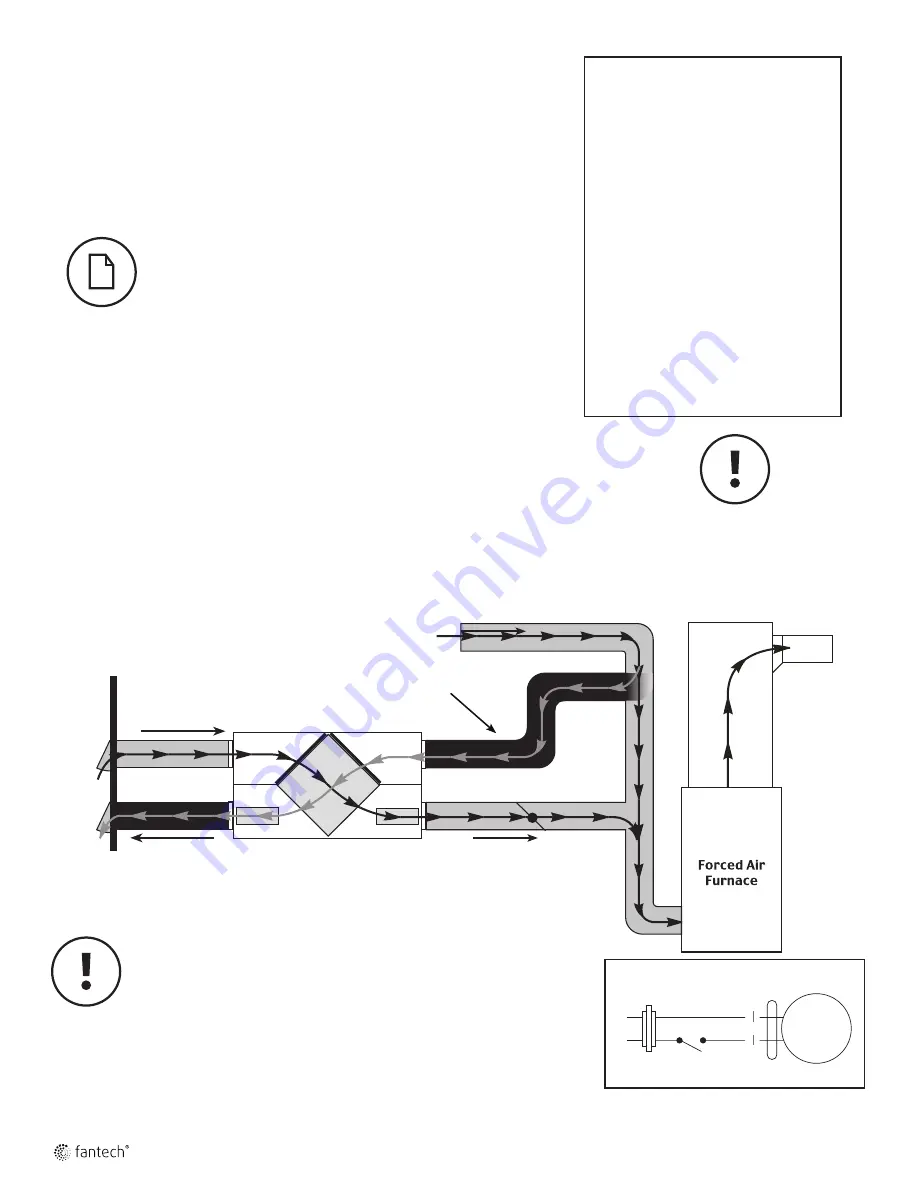
6
INSTALLATION EXAMPLES
(CONT'D)
DIRECT CONNECTION of the FRESH air to living area to the RETURN PLENUM
of the AIR HANDLER (Stale air drawn from key areas of home)
PARTIALLY DEDICATED SYSTEM (BETTER)
Suggested installation for:
• Central furnace (air
handling unit or central air
conditioners)
• When ducting fresh air to
living area is not possible or
practical, i.e. expensive or
when the central AHU will
operate year-round.
Benefits:
Conditions the fresh
air prior to
distributing it throughout the
house
1. In order to provide proper distribution of the fresh air, it is
recommended that the furnace blower be set to run continuously or
interconnected with FAA.
See furnace electrical connection on page
16.
2. Stale air is drawn from key areas of the home (bathroom, kitchen,
laundry room).
3. Fresh air is supplied to the return air plenum of the furnace.
4. Due to the difference in pressure between the FAA and the equipment
it is being connected to the FAA's airflow must be balanced on site,
using the procedure found in the section “AIRFLOW BALANCING”
* In the case of a multi-zone system, please contact Fantech customer
service prior to installing any installation type requiring the use of the
furnace interlock"
FAA/Furnace ducting for Partially Dedicated System
Air from inside
* Unit air flow should be balanced while FAA is on "Normal" speed and
furnace blower is running.
Air return
Cold air
return
* Ductwork layout may dif-
fer depending on model
Stale air to
outside
Fresh air from
outside
Fresh air to
living areas
Fantech fresh air applicance (FAA or HRV/ERV) that use a supply fan shutdown for frost
prevention do not include an outdoor air motorized damper. If you are using a simplified
installation, i.e. connecting the FAA supply air duct to a furnace's return air duct, the FAA
must operate continuously. When the FAA is turned off, no warm exhaust air will flow
through the FAA but the furnace's fan will continue to draw in outdoor air directly into the
furnace. If it's cold outside, cold air will be introduced, without re-heating, directly into
the furnace.
If the FAA is installed such that the homeowner may turn off the FAA during the winter, we
recommend installing a motorized damper between the FAA's supply air and the furnace's
return air duct that closes when the FAA is not operating. See wiring diagram (figure 1).
You may also choose to use a Fantech FAA that uses a recirculation defrost that incorpo-
rates an outdoor air damper.
Damper
Motor
24 VAC Transformer
COM
NO
HRV Furnace interlock
See page 16.
24V
120V
Figure 1
*Transformer and Damper motor not included
Make sure the FAA is
capable of meeting the
required airflow rate.
Summary of Contents for ATMO Series
Page 38: ...38 NOTE...
Page 39: ...39 NOTE...


